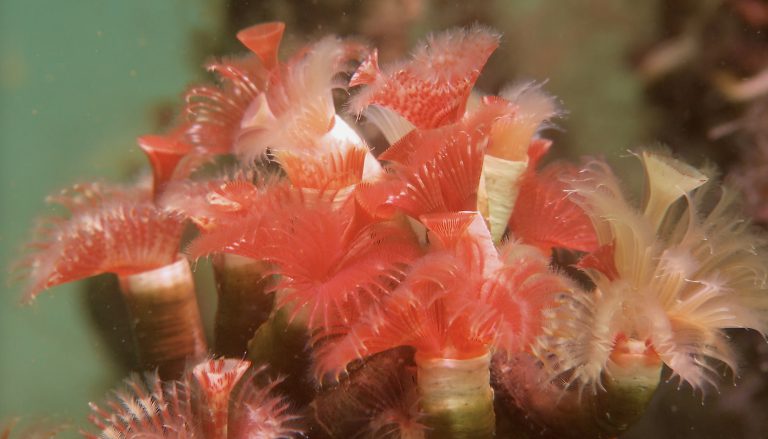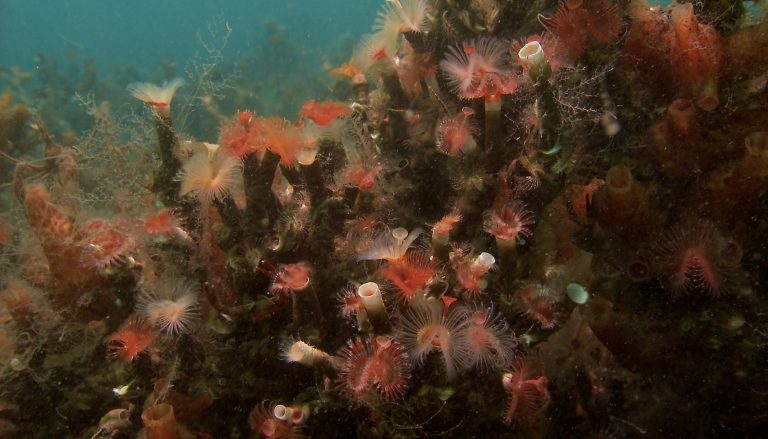
The world’s best reefs built by worms
Serpulid worms occur globally, generally growing as individuals, but in a tiny number of special Scottish lochs they form reefs. Serpulids have a crown of bright red and orange feathery tentacles, that they use to filter food from the water.
The worms secrete a calcareous tube to protect them from predation. By cementing these tubes together they can create fantastic underwater castles, that provide shelter and habitat for other animals, such as sponges, sea squirts, seaweeds, spider crabs, squat lobsters, starfish, sea urchins, brittle stars and terebellid worms.
In one survey, a reef of 0.1m2 supported 163 different species.

Current Research
Side scanning sonar and diver surveys are used to monitor the Serpulid reef in Loch Creran.
Threats
Serpulid reefs are extremely fragile and can be damaged by mobile and static fishing gear, incautious divers and by anchors and mooring chains. Altered water flow and changes in water quality, due to waste discharge also affect the reefs.
Serpulid worms
Serpula vermicularis

UK Biodiversity Action Plan habitat and a Scottish Government Priority
Marine Feature.
Length: 1m
Depth: 6-15m


